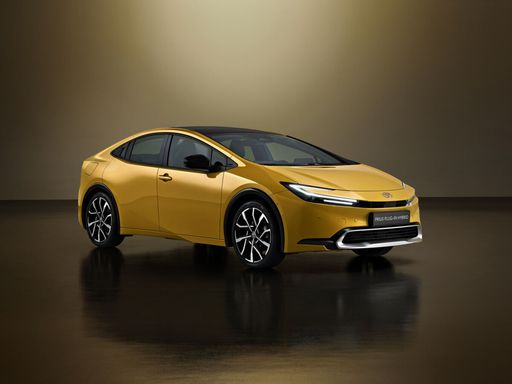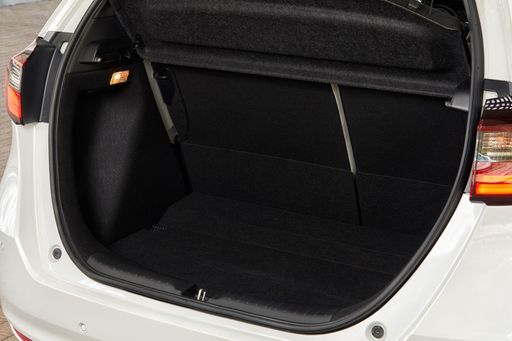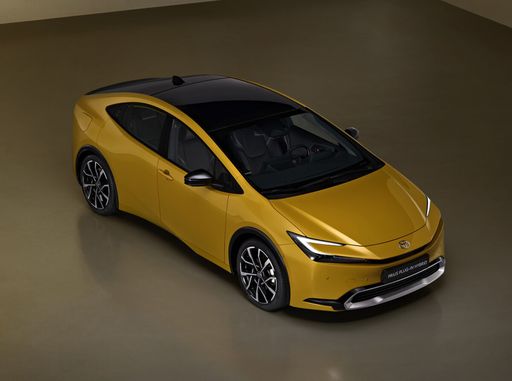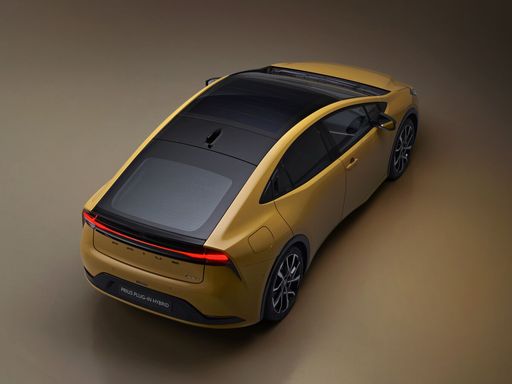Honda Jazz vs Toyota Prius - Differences and prices compared
Compare performance (122 HP vs 223 HP), boot space and price (23100 £ vs 39400 £) at a glance. Find out which car is the better choice for you – Honda Jazz or Toyota Prius?
Costs and Efficiency:
Price and efficiency are often the first things buyers look at. Here it becomes clear which model has the long-term edge – whether at the pump, the plug, or in purchase price.
Honda Jazz has a clearly advantage in terms of price – it starts at 23100 £, while the Toyota Prius costs 39400 £. That’s a price difference of around 16320 £.
Fuel consumption also shows a difference: Toyota Prius manages with 0.50 L and is therefore convincingly more efficient than the Honda Jazz with 4.50 L. The difference is about 4 L per 100 km.
Engine and Performance:
Power, torque and acceleration are the classic benchmarks for car enthusiasts – and here, some clear differences start to show.
When it comes to engine power, the Toyota Prius has a decisively edge – offering 223 HP compared to 122 HP. That’s roughly 101 HP more horsepower.
In acceleration from 0 to 100 km/h, the Toyota Prius is distinct quicker – completing the sprint in 6.80 s, while the Honda Jazz takes 9.40 s. That’s about 2.60 s faster.
In terms of top speed, the Toyota Prius performs minimal better – reaching 177 km/h, while the Honda Jazz tops out at 175 km/h. The difference is around 2 km/h.
Space and Everyday Use:
Whether family car or daily driver – which one offers more room, flexibility and comfort?
Both vehicles offer seating for 5 people.
In curb weight, Honda Jazz is evident lighter – 1302 kg compared to 1620 kg. The difference is around 318 kg.
In terms of boot space, the Honda Jazz offers slight more room – 304 L compared to 284 L. That’s a difference of about 20 L.
When it comes to payload, Honda Jazz minimal takes the win – 388 kg compared to 375 kg. That’s a difference of about 13 kg.
Who wins the race?
The Toyota Prius proves to be leaves the rival little chance and therefore becomes our DriveDuel Champion!
Toyota Prius is the better all-rounder in this comparison.

Toyota Prius
Costs and Consumption
View detailed analysis
Engine and Performance
View detailed analysis
Dimensions and Body
View detailed analysis
Honda Jazz
The Honda Jazz is a supremely practical small hatch that hides clever packaging and more usable space than it lets on, with friendly styling and an unfussy charm. It’s economical to run, easy to park and perfect for buyers who want reliable, versatile daily motoring without the hassle.
details




Toyota Prius
The Prius glides through traffic like a wise commuter's secret weapon, balancing miserly running costs with an unflappable sense of reliability. It's not a thrill seeker, but its roomy cabin, sensible packaging and low-stress driving personality make it a brilliant choice for buyers who value peace of mind over pulse-raising performance.
details




|

|
|
|
|
Costs and Consumption |
|
|---|---|
|
Price
23100 - 26700 £
|
Price
39400 - 45800 £
|
|
Consumption L/100km
4.5 - 4.8 L
|
Consumption L/100km
0.5 - 0.7 L
|
|
Consumption kWh/100km
-
|
Consumption kWh/100km
-
|
|
Electric Range
-
|
Electric Range
72 - 86 km
|
|
Battery Capacity
-
|
Battery Capacity
-
|
|
co2
102 - 108 g/km
|
co2
12 - 17 g/km
|
|
Fuel tank capacity
40 L
|
Fuel tank capacity
40 L
|
Dimensions and Body |
|
|---|---|
|
Body Type
Hatchback
|
Body Type
Hatchback
|
|
Seats
5
|
Seats
5
|
|
Doors
5
|
Doors
5
|
|
Curb weight
1302 - 1320 kg
|
Curb weight
1620 - 1630 kg
|
|
Trunk capacity
304 L
|
Trunk capacity
284 L
|
|
Length
4089 - 4105 mm
|
Length
4599 mm
|
|
Width
-
|
Width
1782 mm
|
|
Height
1526 - 1556 mm
|
Height
1470 mm
|
|
Max trunk capacity
1205 L
|
Max trunk capacity
-
|
|
Payload
370 - 388 kg
|
Payload
365 - 375 kg
|
Engine and Performance |
|
|---|---|
|
Engine Type
Full Hybrid
|
Engine Type
Plugin Hybrid
|
|
Transmission
Automatic
|
Transmission
Automatic
|
|
Transmission Detail
CVT
|
Transmission Detail
CVT
|
|
Drive Type
Front-Wheel Drive
|
Drive Type
Front-Wheel Drive
|
|
Power HP
122 HP
|
Power HP
223 HP
|
|
Acceleration 0-100km/h
9.4 - 9.7 s
|
Acceleration 0-100km/h
6.80 s
|
|
Max Speed
175 km/h
|
Max Speed
177 km/h
|
|
Torque
253 Nm
|
Torque
-
|
|
Number of Cylinders
4
|
Number of Cylinders
4
|
|
Power kW
90 kW
|
Power kW
164 kW
|
|
Engine capacity
1498 cm3
|
Engine capacity
1998 cm3
|
General |
|
|---|---|
|
Model Year
2023
|
Model Year
2023
|
|
CO2 Efficiency Class
C
|
CO2 Efficiency Class
B
|
|
Brand
Honda
|
Brand
Toyota
|
Is the Honda Jazz offered with different drivetrains?
The Honda Jazz is offered with Front-Wheel Drive.
The prices and data displayed are estimates based on German list prices and may vary by country. This information is not legally binding.
